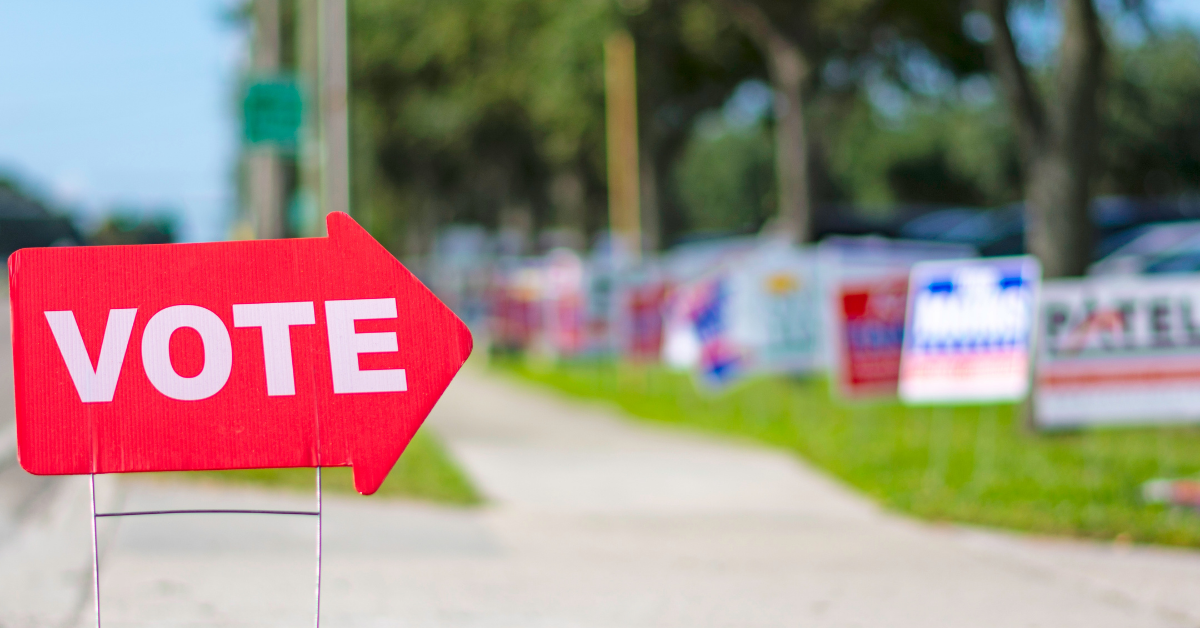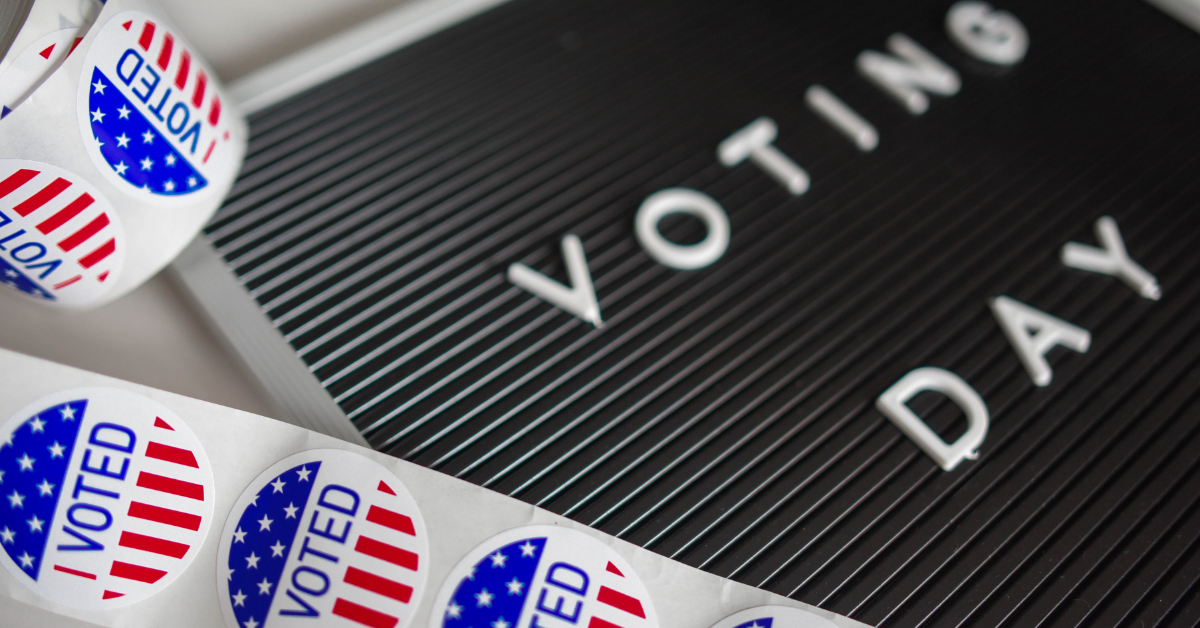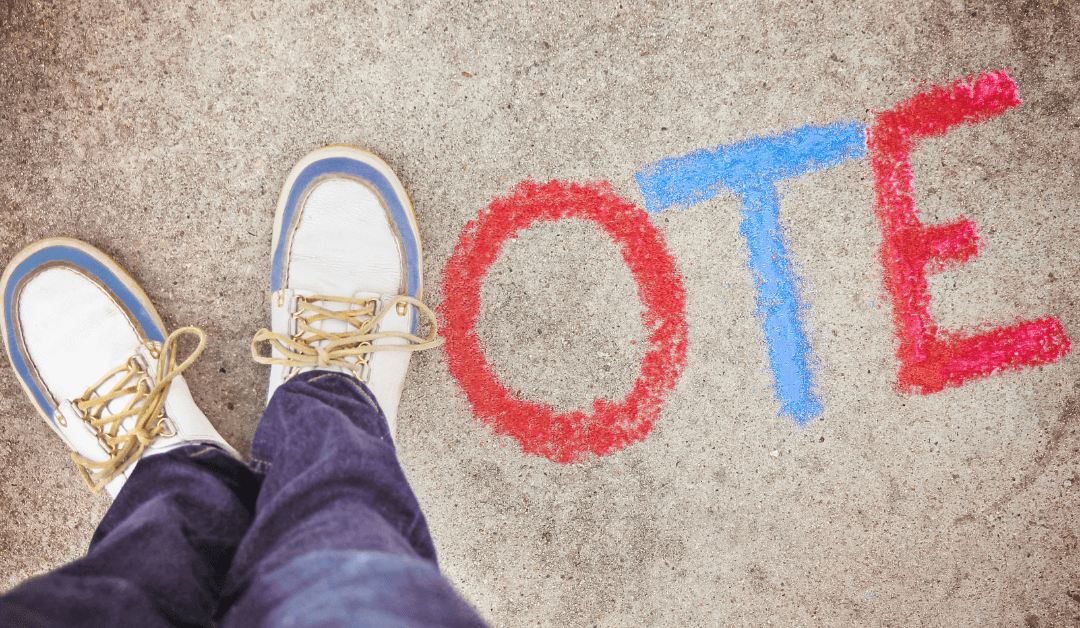Election day is Tuesday November 3rd, 2020.
Whether it’s because of the pandemic or due to the turbulent political climate, 2020 is an election year unlike any other. It seems like news is breaking every minute, facts are changing every day, and it’s hard to know who to trust for reliable, nonpartisan election info.
Those of us in the disability community especially need trustworthy information about voting options and accommodations this year.
On this page, you’ll find a video and quick links below.
On October 8th, Easterseals Midwest and Emmaus teamed up with Denise Lieberman of the Missouri Voter Protection Coalition for a virtual discussion about absentee voting (mail-in and in-person), accessible voting (polling accommodations for people with disabilities), and more.
Watch the video of Denise’s presentation here:

Vote by mail
Before they send you a mail-in ballot, you need to fill out an application. Download this form and fill it out completely. This is an official form; you must answer honestly and in good faith. You will select the reason you need to vote absentee. Five out of the seven options will require you to have your ballot notarized. However, options #2 (incapacity/confinement due to disability/illness and/or caring for a person with a disability/illness) and #7 (in at-risk category of contracting COVID-19) do not require a notary. Many people with disabilities, certain members of their families, and many Direct Support Professionals qualify for reasons #2 and/or #7.
Once you have completed your ballot application, mail it to your local election authority (find the address for your county here). Once they receive your application, they will mail you your ballot. You must return your ballot so that it is received by the local election authority on or before November 3rd. In other words, send your completed ballot as soon as possible. Based on the reason you selected on the application, you might need to have your ballot notarized before sending it back in. If you need help locating a notary in your area, you can visit this link.

Vote early in-person
Another option is to vote in-person absentee, also known as early voting. This may help you avoid the risk of illness and the accessibility challenges of election day crowds. Just like mail-in voting, you will need to choose the reason that applies to you. Unlike mail-in voting, you do not need to send in an application or worry about finding a notary. Just go to your local election authority’s office before Monday, November 2nd, and vote exactly like you would at the polls. Some populous localities (St. Louis City, for example) have even opened “satellite” polling locations, open for early voting on select days and times. You will find all the information you need through your local election authority.

Accessible voting
Every polling place must be physically accessible and have an accessible voting system for individuals with disabilities including audiovisual accessibility. If you have limited mobility you can vote “curbside.” You should go to your polling place and call the telephone number (should be clearly posted) or ask someone to go in and ask poll workers to bring a ballot out to you. If you need assistance in the ballot box, you also have the right to bring in a person to help you vote. This person does not have to be over the age of 18 or have to be a registered voter. This can be a direct support professional, a family member, a friend, or anyone who you trust (as long as it isn’t your boss or your union rep). Additionally, a bipartisan team of poll workers on site can assist you upon request. Accessibility is a civil right; if you feel your rights are being impeded on election day, call the Election Protection hotline by dialing 866-OUR-VOTE (866-687-8683).
Voting rights and guardianship
Some people with disabilities have a legal guardian. If you have a guardian, can you still vote? It depends on the specific situation. Most of the time, you and your guardian would need to have explicitly protected your right to vote when the guardianship arrangement was created. This will be noted on your legal guardianship document. If your guardianship plan does not protect your right to vote, it can be revised, but that typically requires the assistance of an attorney. If you want to vote but are not sure if you legally can because you have a guardian, talk to someone you trust who can help you look into the details of your guardianship arrangement – usually a family member, friend, or a member of your support team. There are advocacy groups who can help restore voting rights to people with disabilities.
If you have any questions or need assistance with voting:

